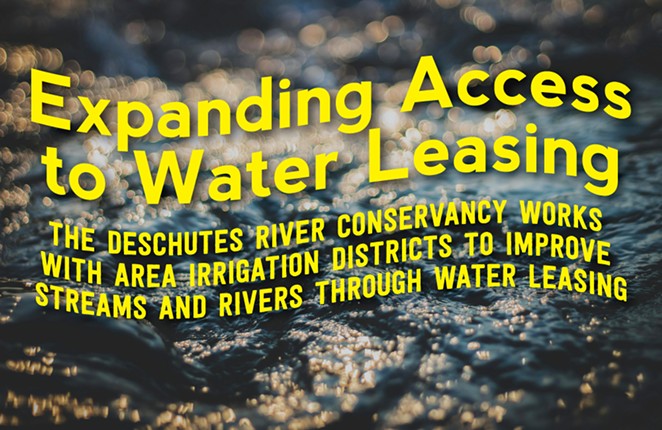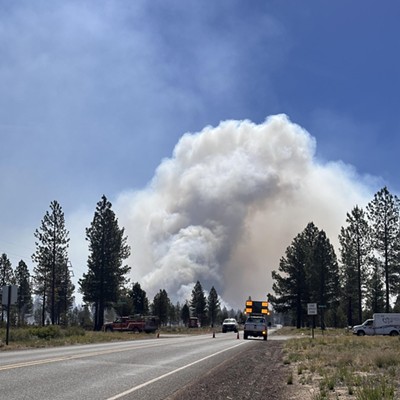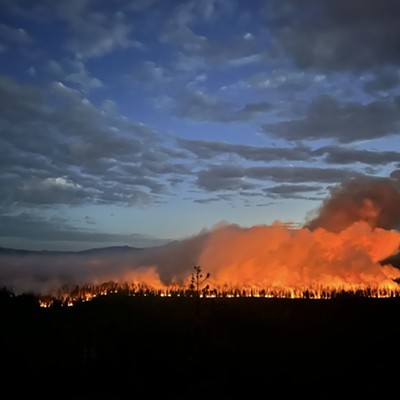When it comes to protecting local water sources, one important mechanism – a process called water leasing – allows someone to loan or rent their irrigation water to another user if they don't need it, allowing it to be utilized for conservancy purposes.
In this process, a water right holder can temporarily and voluntarily defer the use of their water and keep the water in the rivers. Water leasing can benefit both water rights holders, who want to keep their water rights, given the "use it or lose it" rules, while also benefiting streams and rivers.
The Deschutes River Conservancy, a local organization dedicated to restoring streamflow and improving water quality in the Deschutes River Basin, leases water to help restore instream flow for "another user," which is the Deschutes Basin and tributaries.
While water leasing is just one solution available to protect rivers and streams, efforts to expand availability to water leasing programs, such as recently passed bills, have made the process more accessible.
According to Jim Bond with the DRC, the organization has been coordinating water leasing in the Deschutes Basin since 1998. Split-season leasing, a special type of instream lease that allows a water right holder to use the water during part of the season and lease the water right instream during the other part of the season, has been authorized since 2001 as part of a pilot program.
In 2023, legislators passed HB 3164, making the program permanent. Another bill that passed in 2023, HB 2971, allowed those with lands zoned for farming to lease water and still get reduced property taxes. Previously, the process of water leasing could jeopardize the reduced property taxes individuals received when they engage in agriculture.
"HB 3164 was an important step to improve Oregon's ability to manage water, and it does open up more opportunity to develop flexible solutions with water right holders to meet water needs and restore flows in our rivers and streams," said Bond. "At this point in time, I can't say that we've seen a noticeable increase yet – but I do think it provides a secure path for us to grow our participants, and consequently, increase our water leased in the years to come."
The benefits of water leasing, according to Bond, are plenty. It provides water right holders another option to make decisions around water use while helping to restore flows to streams and rivers, helping DRC to manage resources in time of drought and increasing demand.
Low stream flows can result in poor water quality and degraded habitats for fish and wildlife. "Even incremental amounts can make a huge difference for the health and sustainability of the ecosystems," said Bond.
The DRC's leasing program works mainly with irrigation districts to enroll water into its program. "The Leasing Program partnership between COID and the DRC is a win-win for irrigators, the district, fish, wildlife, and river restoration," read a statement on Central Oregon Irrigation District's website.
COID offers another program, the Temporary Water Transfer Program, that allows a patron to temporarily transfer a portion or all of the water right by leasing it to another patron for a one-year period. The program, which came out of SB 267, can benefit other farmers who may need more water.
Each year, Bond said, the DRC leasing program helps keep water instream in the Deschutes River, Crooked River, Ochoco Creek, Wychus Creek, Trout Creek and other streams. In several of the streams, the water left instream below major diversions is all a result of conservation projects, like water leasing.
"Leasing accounts for up to 25% of the water in the Deschutes River below Bend, the water flowing through Sisters in Whychus Creek and the flows in lower Tumalo Creek in the summer," said Bond.
The amount of water that the DRC leases in any given year, Bond said, can fluctuate due to a variety of factors, including drought and ownership changes. However, he said the organization averages between 4,200 and 4,500 acres in lease with over 300 landowners and 60 cubic feet per second, protected in up to nine streams.
The numbers continue to grow. In 2023, they leased close to 65 CFS and expect to lease close to 80 CFS in 2024. "We are diligently working toward expanding the opportunity to lease even more water and continue to help more streams in the Basin," said Bond.
DRC is currently working on the development of a more formal Water Bank for the Deschutes, with the intention that the Water Bank will serve as the overarching platform to provide information and streamline the access and use of a variety of opportunities to move water, restore flows to the river and meet the diverse needs of the region.
"We are excited to work with the irrigation districts, tribes, communities and individual water right holders as we work to set up and evolve our regional water bank," said Bond.

























